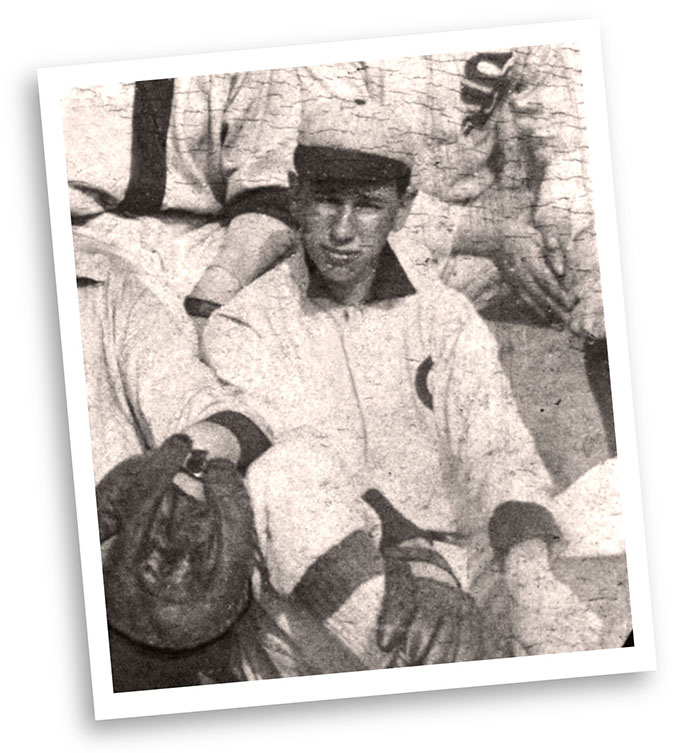My father held my hand as we slowly worked our way through the parking lot of the Los Angeles Memorial Coliseum and up through the turnstiles. I was seven years old. He had already sized up my interest in the game of baseball and was taking me to my first live major league game. The Brooklyn Dodgers had become the Los Angeles Dodgers that year in 1958 for their first season in Southern California.
As my father walked me through the Coliseum portals, the marvelous expanse of a baseball field suddenly opened up in front of me. The Los Angeles Coliseum would not be rated particularly high as a ballpark today. Its short left field, only 251 feet from home plate, required two 40-foot-high curtains, an awkward retrofit from its primary role as a football venue. But that day all my young eyes could see was the emerald green grass, the crushed brick infield, the white bases, and the grace of the players on the field. I was spellbound.
There below us were the hometown Dodgers in their royal blue caps and uniform lettering, set off by the small red numbers on their ivory home whites. Those Dodgers became my early baseball heroes. That day they were playing the St. Louis Cardinals. The legendary Stan “The Man” Musial trotted by in his gray road uniform with the iconic redbirds-on-a-bat logo. All that summer we watched the likes of Pee Wee Reese, Carl Furillo, Junior Gilliam, Carl Erskine, Don Drysdale and Sandy Koufax in my first introduction to Major League Baseball. Those players might as well have been baseball gods to me at that early age. My father later told me that when he looked down at me on my first day attending a Dodger game at the Coliseum, “he knew he had me.”
A Family History of Baseball
His father, my grandfather William Sigg, was a 119-pound left-handed shortstop who played in the semi-professional leagues around New York City during the first years of the 20th century. Before my grandfather volunteered at age 31 to fight in the infantry in World War I, he played baseball on the same fields opposite such famous New York City area semi-pro teams as the Brooklyn Bushwicks of Queens’ Dexter Park and New Jersey’s Paterson Silk Sox. Much later in the early 1960s, my grandfather pointed out to me several of the big-league players on my early T206 tobacco baseball cards he had played against during the Deadball Era.
My father Robert Sigg was born in Jersey City and raised in Hollis, Queens in New York City. As a youngster growing up in the late 1920s and early 1930s, he was around baseball with his father and even hit a home run at Ebbets field in a youth game. Dad and his “Pop” rode the subway to the Polo Grounds to watch his favorite team, the New York Giants. He had engaged me with stories of his own childhood hometown heroes. The great Giants championship teams of his youth featured such stars as“King” Carl Hubbell, “Prince” Hal Schumacher, Travis “Stonewall” Jackson, Harry “The Horse” Danning, Jo-Jo Moore and Bill Terry.
Passing the Tradition from Father to Son
My father also told me how he would ride the subway trains to old Yankee Stadium to see the first of the Bronx Bombers dynasty teams. The Yankees that he regularly recalled included Lou Gehrig, Bill Dickey, Joe DiMaggio, Frankie Crosetti, Earle Combs and Babe Ruth.
My father was my coach several years in junior athletic association and Little League and then enjoyed watching my baseball career unfold through high school, college, semi-pro and senior league competition.
And I have passed the baseball experience on to my son Anthony. Coaching him from age four, the two of us played catch by the hour and worked out together. Later we took two ballpark odyssey tours together to see games at many of the big-league parks across the country, both old and new.
A Bond Between Generations
The game of baseball has been a family heirloom and part of the daily soundtrack of our lives now for four generations – not unlike in millions of other American homes over the past century. Baseball has been an invisible bond between our family’s generations, linking my son to my grandfather, a gentleman my son never met but whose person he has come to know through this greatest of games.
The lifetime players featured in Hometown Heroes have enhanced our enjoyment and fascination with baseball. Capturing our imagination, these influential stars have become hometown treasures in regions all across America. Every town has its baseball heroes. Many of yours are given tribute in this book. And as it turns out, embedded within the stories of these cornerstone ballplayers is the essential history of Major League Baseball in the 20th century.
Grandfather William Sigg in Dexter Park, Queens, New York, 1917.
Author Clay Sigg, at 3 years of age, with his father Robert Sigg.

